Our subject
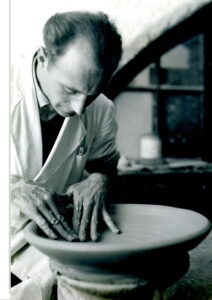
Egon Huber (1905-1960), was an Austrian designer, ceramicist, sculptor, installation artist, and philhellene. He is best known for his association with the Industria Ceramiche Artistiche Rodio Orientali (I.C.A.R.O.) company, on the island of Rhodes, in the 1930s and 1940s. Lawrence Durrell, no less, provides an introduction: “Our circle of acquaintance has widened to include… Egon Huber, an Austrian potter who has lived here for some fifteen years and has been responsible for much of the lovely Icarus pottery turned out during the Italian dispensation… Fourteen years ago he was washed up in Rhodes during a storm. He had been trying to travel from Venice to Alexandria in a canoe. The island pleased him and he stayed, while the Italian governor, who had been appealing to Rome for an expert in pottery for years past, suddenly heard that God had answered his prayers, and had provided him with a penniless and talented Austrian needing some form of subsistence beyond the ikons he was doing for the churches.” (Reflections on a Marine Venus, p.43)
Early life
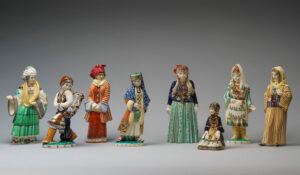
Huber was born in Bregenz, Austria, in 1905, spending his early years in Salzburg. As a boy he was multi-talented, interested in all the arts, photography, and music (he played the guitar and violin). He expressed a desire early on to become a painter and sculptor and secured a place after the First World War at the University of Vienna, where he added ceramic arts to his studies. After university Huber lectured at the Academy of Fine Arts in Vienna. note 1
The Eastern Mediterranean
By his late twenties, seeking a more creative and artistically fulfilling life, he embarked on a solo journey in a dinghy from Vienna (or Venice according to Lawrence Durrell, who comes to know Huber well in the 1940s), via the Danube, the Black Sea, and the Turkish littoral, to Egypt. This odyssey was cut short in 1931, however, when Huber met with a violent storm off the island of Symi that blew him across the strait to the island of Rhodes, in the Dodecanese, at that time in the hands of the Italians. note 1 note 2 He immediately formed an attachment to the island and it became his home for the next twenty-five years – an equanimitable personality enabling him to cope with Greeks, Italians, Germans, and British alike during his long residence.
‘Industria Ceramiche Artistiche Rodio Orientali’ (I.C.A.R.O.)
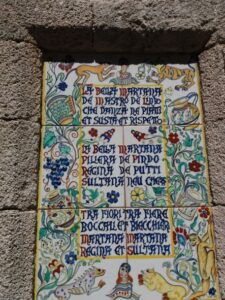
In early 1928, an Italian pottery company ‘Industria Ceramiche Artistiche Rodio Orientali’ (I.C.A.R.O.) had been founded on Rhodes, as part of the administration’s plan to industrialise the Dodecanese islands, to produce and market a range of pottery for export generally and to sell to the growing number of European tourists. note 3 The business model was a sound one, based on regenerating the early designs, many of Iznik/Syrian/Levantine origin, that had been made so popular by the ateliers of Lindos and Archangelos, on Rhodes’ southern coast, since medieval times. Hearing of Huber’s background in ceramics, a meeting took place with I.C.A.R.O. director Alfred Biliotti, who offered the Austrian a position as ceramic designer. note 1 The creative team included two Italians, Luigi de Lerma and Dario Poppi, note 4 and, briefly, the German potter Günther Stüdemann. note 5 Huber’s imagination, creative, distinctive designs, line and use of colour made him a key figure in I.C.A.R.O.’s initial phase (1928 – c. 1942) and he was appointed its first artistic director. note 1
Friendship with Lawrence Durrell
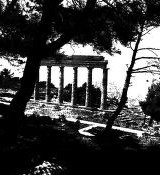
For a portrait of the artist, there are many references to Huber in Durrell’s ‘Reflections on a Marine Venus’ (1953). Durrell was stationed on Rhodes as Information Officer for two years when the Dodecanese were under British Administration (1945-1947). The English writer describes Huber as “a born solitary, tall, fair-haired… one of the aristocrats of the spirit — the poor artist who wishes for nothing but a chance to create.” note 2 The melancholy tone is appropriate, the war has effectively brought an abrupt end to the heady days of I.C.A.R.O.’s first, and best, period. Huber now spends his time beach-combing, note 2 and fishing. note 6 There was time, too, to make gifts for Durrell’s tiny home (a stone’s throw from the Casino, it still stands) – two white vases: “I remember so vividly the thump of the clay on the wheel, and the gradual emergence of their fine stems under the broad thumbs of Egon Huber”. note 7 There exists a classic black-and-white photograph of Huber at his wheel. note 8 note 9 The title of Durrell’s book on Rhodes even has an association with Huber, who was apparently present when the eponymous ‘Marine Venus’ was buried, in late 1942, to keep it out of the hands of the approaching Germans. note 10
Metamorphosis and IKAROS
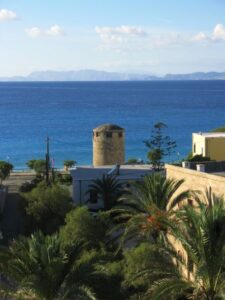
The German occupation of the Dodecanese, and the duration of the Second World War, ushered in a second, much less productive phase for the ceramics firm, with Huber being obliged to focus less on I.C.A.R.O. and more on designing propaganda material.[11] By this time, the artist was living in one of the medieval windmills that cluster around the windy northern point of Rhodes town. Durrell calls it “a little Martello tower much ruined by damp and neglect. How he avoided having to join the German Army is a miracle… He works in desultory fashion at the ruined workshop outside the town where in the past this world-famous pottery brought him tourists in their thousands and where shortage of clay has reduced him to poverty.” note 2
When the Italian colonists ceded Rhodes, and the Dodecanese, to Greece officially in 1947, the assets of I.C.A.R.O. were acquired by a Rhodian entrepreneur, who neatly rebadged the new Greek company as IKAROS, and it continued to produce decorative and popular ceramics until 1988. note 11 The metamorphosed pottery enterprise lasted exactly 60 years, and the output from the firm’s first phase is now widely collected worldwide, based much on the creative energy and imagination of Egon Huber. note 12
Marriage and later life
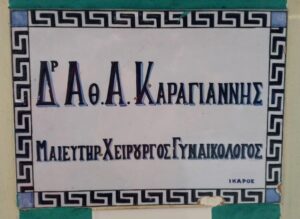
Huber, meanwhile, was tempted away from his old firm in 1947 to head up a rival company on Rhodes, in Rodini, on the main road to Lindos, and an offshoot of the large Athenian ceramics manufacturer – Kerameikos S.A. note XXX While arranging this in Athens, Huber, now in his forties, met a chemistry student, Elpida Bianchini, who was working as a colour specialist in the Kerameikos factory at Neo Phaliro. note 14 Elpida came to Rhodes as Huber’s wife and the couple had a daughter. Huber was to run “Kerameikos – To Rodini” from 1947 until the factory closed some eight years later. note 14
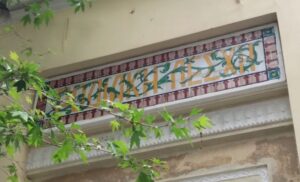
Huber now found himself out of work and with no option but to leave Rhodes, much changed since he had found himself washed ashore there in 1931. He and his family moved to Athens, where he was taken on as a painter in the main Kerameikos factory, near which he lived. note 14 These changes, and the fact that he had lost his own creative bearings, as well as having to provide for his family, eventually led to something of a crisis that saw Huber resigning and temporarily moving back to Vienna in 1956, to stay with his sister, while he searched for some artistic meaning in his life; he was 51. There he began to find inspiration in modernist sculpture and installation art, collaborating with an old friend, the sculptor Rudolf Hoflehner (1916-1995). note 15 With a new sense of direction, Huber returned to Athens, and a break seemed to come in 1960 when he and Hoflehner were commissioned to represent Austria at the Venice Biennale that Autumn. Huber busied himself preparing a series of large pieces in stone and iron, but he was not to complete them, he died that summer in Athens, aged just 55. note 14
Huber’s work and legacy

Rare examples of Huber’s early work are to be found today in the Benaki Museum, Athens and in private collections. He specialised in scenes composed of ceramic tiles, his influence being seen in his icon of the Virgin of Filerimos, decorative plaques for the port authorities of the region, and the amusing tile illustration of the doggerel ‘La bella Martana, De Mastro De Lindo’, preserved today in the small courtyard behind I.C.A.R.O.’s former showroom at the bottom of the Street of Knights in Rhodes’ Old Town. note 16 Numerous other decorative pieces are still to be seen.
Huber’s work featured in the exhibition “ICARO – ΙΚΑΡΟΣ The Factory of Rhodes 1928-1988” in 2017 in Athens note 17 and 2018 on Rhodes. note 18 note 19
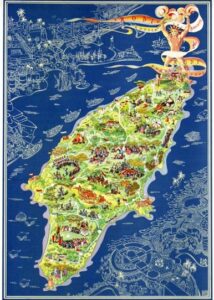
In 1935 Huber also designed a highly decorative pictorial colour map/poster (69 x 49 cm) of Rhodes for the Italian State Tourist Department (ENIT), promoting his island and its legends, history and traditions. note 11 The composition is dominated, as might be expected, by Huber’s interpretation of the Colossus.
Do let us know if you have any information on the life and work of Egon Huber we can add!
References & Sources
Return from Note 1
Return from Note 2
Return from Note 3
Return from Note 4
Return from Note 5
Return from Note 6
Return from Note 7
Return from Note 8
Return from Note 9
Return from Note 10
Return from Note 11
Return from Note 12
Return from Note 13
Return from Note 14
Return from Note 15
Return from Note 16
Return from Note 17
Return from Note 18
Return from Note 19
- Ioannidis, Yiannos (2017). ICARO – IKAROS The Pottery Factory of Rhodes, 1928-1988: 99-101 (in Greek). The Benaki Museum, Athens.
- Ioannidis, Yiannos (2019). I.C.A.R.O. – IKAROS: the pottery factory of Rhodes (1928-1988), in M. Panagiotaki, I. Tomazos and F. Papadimitrakopoulos (eds): Cutting-edge Technologies in Ancient Greece: Materials Science applied to Cutting-edge technologies in ancient Greece: materials science applied to trace ancient technologies in the Aegean world: proceedings of two conferences held in Rhodes, 12–14 January 2018 and 11–13 January 2019: 153–160. Oxbow Books, Oxford.
- Diakosabbas, Giōrgos (2019). I.C.A.R.O. (1927-1947) – Ikaros (1948-1987): 60 chronia kallitechnikēs angeioplastikēs rodioanatolikēs technēs (in Greek). Giōrgos Al. Diakosabbas, Rhodes.
- Durrell, Lawrence (1953). Reflections On A Marine Venus, a companion to the landscape of Rhodes. Faber and Faber, London.
 Leave a comment or contact us about this article
Leave a comment or contact us about this article